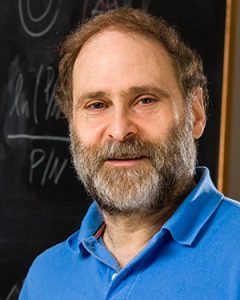By Jinghong Chen | Bond Life Sciences Center
“Living things are too beautiful for there not to be a mathematics that describes them.”

This is Thomas Schneider’s motto.
Schneider, a research biologist at the National Cancer Institute, spent most of his career understanding math and its relation with fundamental biology. His lab focuses on the DNA and RNA patterns that characterize genetic control systems; they invented the widely-used sequence logos.
“In the first place, I am doing this because I am curious,” Schneider said. “Let’s go find the math and who knows what would come out of that.”
Schneider will speak during the 33rd annual Missouri Life Sciences Week, a celebration of MU’s science research and collaboration across disciplines.
Claude Shannon’s information theory lays the foundation of Schneider’s study. In the landmark paper published in 1948, Shannon defined the quantity of information and how it transmits amid interference of noise. When people communicate via a phone call, the heat of the telephone line is one type of noise. As noise contaminates information, the highest rate at which information can be reliably transmitted over a noisy communication channel is defined as the channel capacity.
A similar concept emerges in Schneider’s Molecular Information Theory. It leads to a theoretical measure of the efficiency of molecules.
“I thought [Shannon’s] theory was screaming as I dragged it into biology. The stunning thing is that it fits biology really, really well,” Schneider said.
He looked at the DNA binding protein EcoRI, a restriction enzyme that binds DNA. When it binds, there is an inequality relationship between information and the information gained for the dissipated energy. The efficiency of DNA binding sites on nucleic acids is about 70 percent.
This mysterious number has appeared widely in his research and it also describes ecological evenness. In an even ecosystem with all species being equally represented, the evenness is close to 100 percent, but when only one species dominates the environment, its evenness dwindles to 0 percent.
Schneider found that fish species diversity in a Georgia estuary is near 70 percent and the evenness of plant species in different divisions of 8-square-meter plots in California is also around 70 percent.
When Schneider turns from ecological system to biological systems, this number still stands out. Caenorhabditis elegans (C. elegans), a free-living tiny worm, has been extensively studied and has had its entire cell lineage traced. On the basis of previous studies, Schneider calculated the efficiency of its lineage and found that the number fits the ubiquitous 70 percent, when excluding the dead cells of a C. elegans.
With this established case, one of his colleagues suggested looking into one of human’s biggest enemy – cancer. Cancer occurs when a cell develops mutations and grows out of control. Schneider hypothesized that if you have more of a certain type of cell, then you have a larger chance for that cell type to get a mutation that might lead to cancer.
The International Agency for Research on Cancer (IARC) publishes a report on all different types of cancers observed each five or six years. Based on the data collected by IARC and the hypothesis, Schneider found that for adults whose ages are above 14 years old, the cancer type evenness always remains around 70 percent.
“The thing that is interesting is that when you understand things fundamentally, it inevitably leads to practical results,” Schneider said.
Schneider’s speech on “Three Principles of Biological States: Ecology and Cancer” will be held at 1:15 p.m. April 11 in the Monsanto Auditorium at Bond Life Sciences Center.
Missouri Life Sciences Week is a university-wide event that brings together research across scientific disciplines at Mizzou. This year will highlight more than 300 student, faculty and staff research presentations and four topical lectures by accomplished researchers in addition to career development workshops and scientific service and supply exhibits.
Check out the full schedule of events here.

